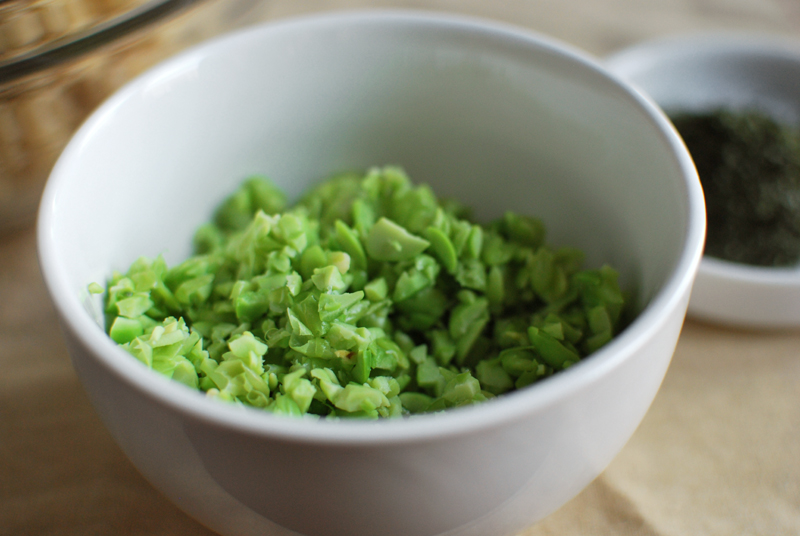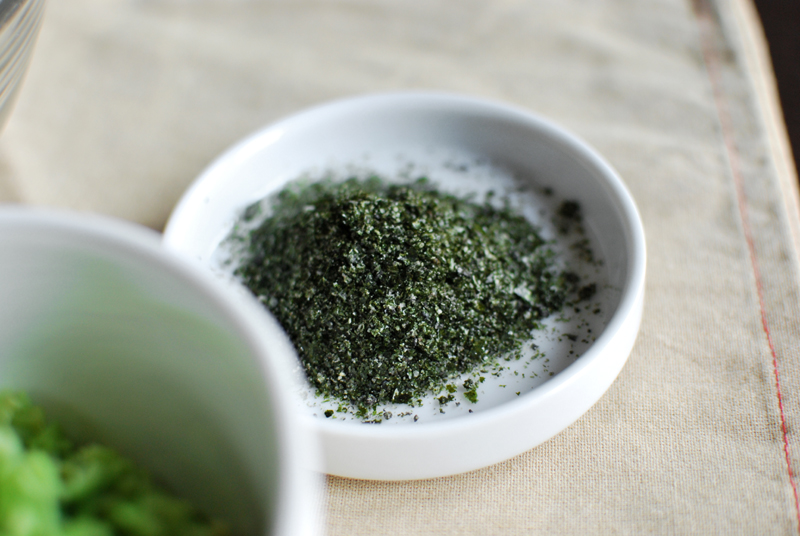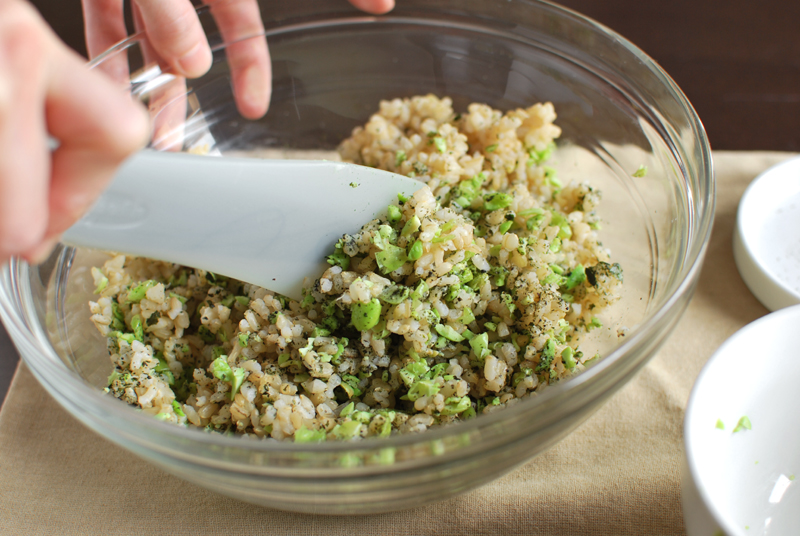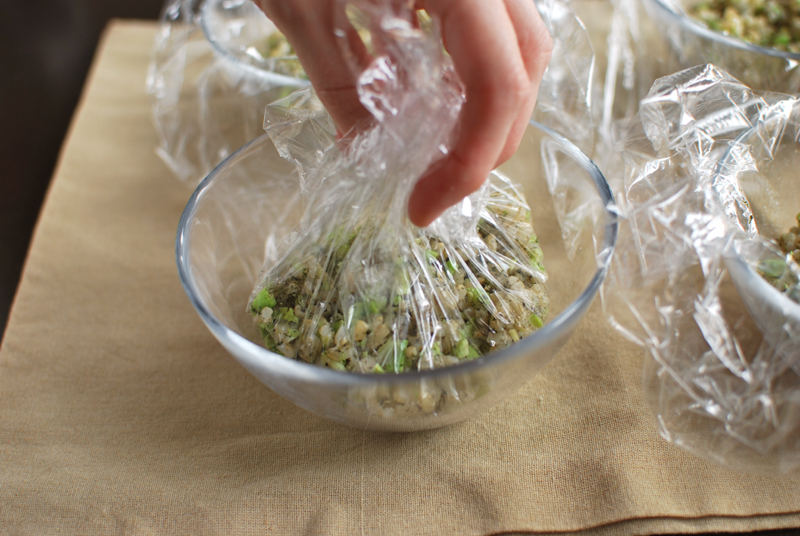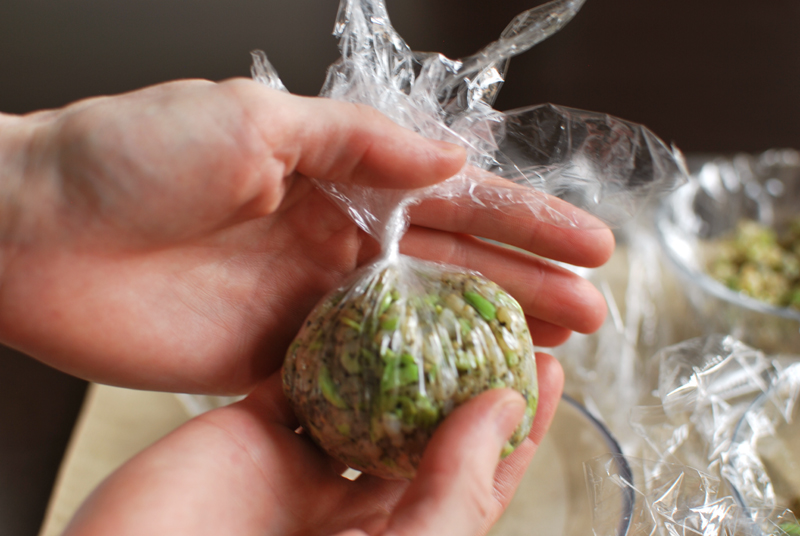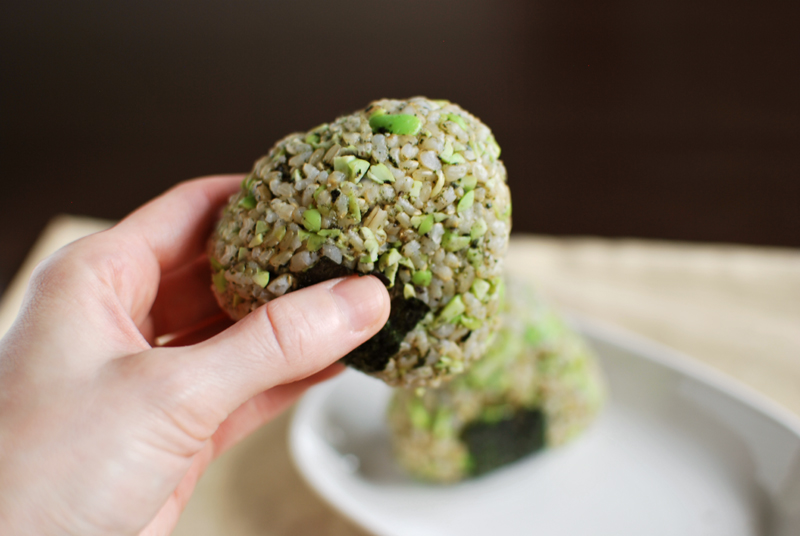I love cooking. That’s probably quite apparent, what with the food blog and all; and it’s even more apparent when you consider that I cook for a living, too.
So why, then, can I never be bothered to make myself lunch? In the middle of the day, if it takes longer than about two minutes to prepare, it isn’t happening. This from a girl who spends entire days preparing totally-from-scratch meals for others, and loves it dearly.
Most often, my lunch ends up being a bowl of brown rice and edamame, two things I make sure to always have on hand. If, by some misfortune, there is no cooked brown rice in the fridge, I consider myself ess-oh-el. Much hand-wringing ensues, followed by apples and cereal, or the rare sighting of a fried egg.
I’ve gotten into the bad habit of only bringing basically a Lärabar and an apple to work, which is simple, delicious, and portable, but it’s not really enough to keep my energy up during a day of cooking. This explains why I sometimes feel exhausted at the end of the day, with only enough left in me to haul myself home and onto the couch. Add beer or wine, and internet. Stir. Serve chilled.
Trying to come up with a way to reformat my go-to lunch into a work-friendly snack, I had the idea long ago to make onigiri, the famous Japanese comfort food that was designed to be a traveling snack. I knew it was, at its most basic, just a ball of rice, but I had assumed it was made of sushi rice (i.e., seasoned with salt, sugar, and vinegar), so I dismissed the thought. I hadn’t ever had luck with making good brown sushi rice; further, neither I nor my hypoglycemic tendencies wanted to resort to white rice, or any kind of rice with sugar.
But in recently looking up recipes for furikake to jazz up my plain rice and edamame, I found I had been wrong. Onigiri is, in fact, never made with sushi rice, but rather with plain rice. The sky opened, and angels sang; my dream of onigiri was reborn.
There are ten million different ways to make onigiri, depending on how the rice is seasoned, whether or not it’s filled, what sort of filling, how it’s shaped, and so on. There is but one requirement: short grain rice is mandatory. Long grain rice will never stick together properly, and medium grain is iffy at best. Do not use jasmine, do not use basmati, do not use Uncle Ben’s. Do not use Minute (ever, not just for onigiri). Do not pass GO. Do not collect $200.
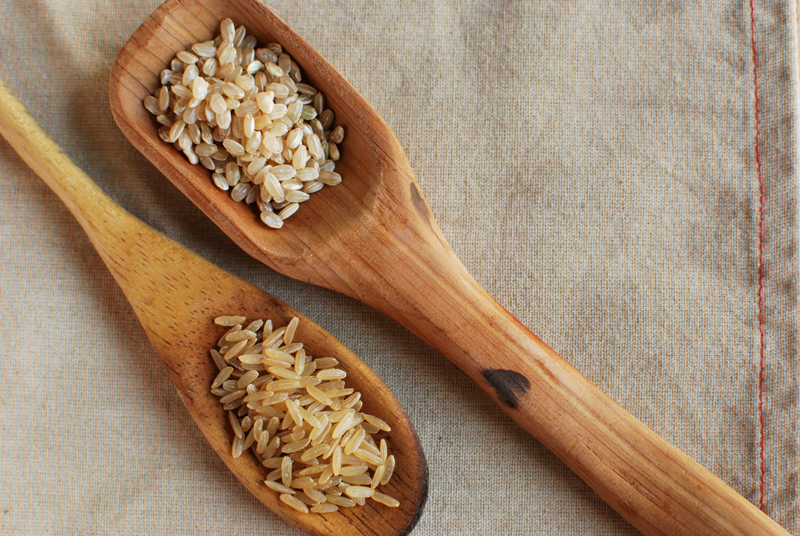
I decided to use the following method to make my onigiri (learned from the delightful Just Hungry) not only because it works particularly well with brown rice, which will always have a harder time sticking together than white rice, but also because it automatically packages the onigiri in the process. It’s ideal for my particular amalgam of laziness and snobbishness.
This is about 2 cups of cooked short grain brown rice. It will make four smallish onigiri. I want to keep them small, so I can eat one easily and quickly while sautéing or whisking or what-have-you. There is no sitting down or stopping to eat at work.

It gets mixed with about 1 cup of frozen shelled edamame, which was thawed in the microwave and pulsed a few times in a food processor.
To season, about 2 tablespoons of black sesame and nori furikake, more or less. This mixture has enough salt in it to adequately season the rice, which can taste a little bland if too little is used.
Mix it all together.
Line four small bowls with plastic wrap, or line one bowl four times. Whatever works. Try to press it in evenly, with no big wrinkles.
Either spray or drizzle in water, just enough to moisten the plastic without pooling. A spray bottle works wonders here; this is a cheap one I picked up god-knows-where for no more than a couple of dollars. It’s useful to have around, especially when the cats misbehave.
A light misting of moisture keeps the rice from sticking to the plastic. I haven’t tried omitting this step; maybe it’s unnecessary, but I don’t mind doing it and my rice hasn’t stuck yet.
Divide the rice evenly between the four bowls.
Gather up the plastic wrap around the rice.
Press the rice together and squeeze out as much air as possible. Don’t crush it, but compress it well. Twist the plastic to hold it all together.
This is basically the end of the process (thanks again to Just Hungry for the technique), but if you want the traditional triangle shape, now’s the time to make it: just squeeze the ball into a triangle shape. These wrapped-up rice balls can be eaten immediately, or after a few hours at room temperature, or refrigerated for a few days. They also freeze beautifully, which is what mine are doing now.
On my way to work in the morning, I grab a couple and leave them at room temperature. By the time I want to eat them, they’re appropriately thawed. If you’re ambitious, wrap a little nori strip around the bottom, just before serving so it doesn’t get too soft. Mine already have nori in them from the furikake, so I only did this for looks. I do not give my onigiri little nori pants at work.
Baked Brown Rice for Onigiri
Adapted from Alton Brown
Makes about 4 cups cooked rice
This method has never, ever, ever failed me. It turns out perfect brown rice, every single time. It works for any type of brown rice, but for onigiri, be sure to use short grain rice. Rice labeled as “sushi rice” is ideal. If in doubt, um, look at the grains of rice. If they’re short and round, then you’re good to go. If they’re long and thin, then don’t bother; it won’t be starchy enough to hold together in a ball.
If you like, you can add some seasoning other than salt before cooking the rice, such as bay leaf, cumin, sesame seeds, cloves, turmeric, star anise, dried herbs, furikake (recipe below), or even a garlic clove. It will season the rice deeply and aromatically.
2 1/2 cups water
1 1/2 cups short grain brown rice
1 teaspoon kosher salt
1. Turn oven to 375º F. No need to fully preheat, just turn it on. Bring the water to a boil, using whatever method is preferable (microwave, stovetop, whatever; me, I use a tea kettle).
2. While water heats, measure out the rice into a baking dish of suitable size. (Mr. Brown recommends an 8 inch square glass dish, which I happen to have, so that’s what I use. I’m sure ceramic is fine, but maybe not metal, which will heat less evenly and probably crisp the outside edges of the rice.) Add the salt. If your dish doesn’t have a tight-fitting cover, pull out a piece of aluminum foil and fit it to the dish (to make covering it later go quickly and easily), then set the foil aside.
3. When the water boils, pour it over the rice and salt. Give it a little stir, and cover tightly with the foil. (See? If you hadn’t fitted the foil to the dish already, you’d be handling that over a dish full of boiling water. I care about your hands.) Immediately place the dish in the oven, and bake at 375º F for 1 hour.
4. Remove the dish from the oven. I like to let it stand for about 10 minutes before uncovering and fluffing the rice with a fork, both to let the dish cool and to give the rice a little extra steaming time. Cooked rice can be stored in the fridge or freezer.
Black Sesame and Nori Furikake (Rice Seasoning)
Adapted from The Kitchn
Makes about 1/2 cup, which will last forever
Furikake is really anything you sprinkle over plain rice to season it. It’s usually fairly potent, so a little goes a long way. The nori here doesn’t give a seaweed flavor so much as an umami richness; with the salt, it has a faint brininess that I particularly love with black sesame. Nori can be found in the “international” section of many grocery stores, but Asian markets will have a wider selection. I found some pre-toasted nori that was already cut into strips, for exactly such an application as this.
1/4 cup black sesame seeds
1 teaspoon kosher salt
1 cup nori (toasted), cut into small strips
1. Place the sesame seeds and salt in a spice grinder, or mortar and pestle. Pulse or grind a few times until the sesame seeds are lightly ground, with some remaining whole. At this point, you can add the nori and grind it all together, or simply mix the ground sesame-salt in with the strips. Store in an airtight container in the freezer, or in the fridge if you’ll use it all within a few days.



